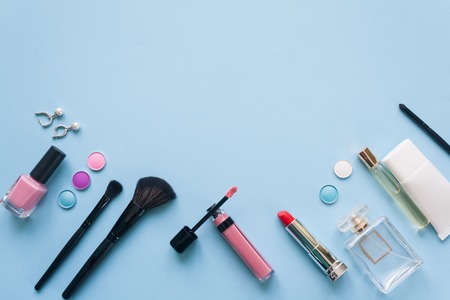Understanding Oily Skin
If you’re constantly blotting your face by midday or find your makeup slipping off before noon, you might be dealing with oily skin. But what exactly causes this common skin type? Oily skin is characterized by an overproduction of sebum—a natural oil produced by our sebaceous glands. While sebum helps protect and hydrate the skin, too much of it can lead to that persistent shine, clogged pores, and frequent breakouts. The reasons behind excess sebum production can range from genetics and hormonal changes to environmental factors like humidity and stress. People with oily skin often struggle with enlarged pores, blackheads, and acne, making it important to choose skincare ingredients that specifically address these challenges without stripping the skin. Understanding the root causes of oily skin is the first step in finding effective solutions and embracing products that keep your complexion balanced, healthy, and glowing.
2. What to Look for in Skincare Ingredients
When it comes to caring for oily skin, choosing the right ingredients is everything. Not all skincare products are created equal—some can actually make excess oil worse or clog pores. Here’s what you should keep an eye out for to keep your complexion balanced and shine-free.
Key Properties for Oily Skin
The golden rule? Go for lightweight, non-comedogenic, and oil-controlling ingredients. These properties help manage oil production without stripping your skin or causing breakouts.
| Property | Why It Matters | What to Look For |
|---|---|---|
| Lightweight Texture | Prevents heavy, greasy feeling on skin and allows pores to breathe | Gel-based moisturizers, water-based serums |
| Non-Comedogenic | Avoids clogging pores, which can trigger breakouts | Products labeled “non-comedogenic” or “oil-free” |
| Oil-Control | Reduces excess sebum and keeps shine at bay throughout the day | Ingredients like niacinamide, clay, salicylic acid |
| Gentle Exfoliation | Keeps pores clear and minimizes buildup without irritation | BHA (salicylic acid), gentle AHA formulas |
| Hydration Without Heaviness | Balances moisture levels so skin doesn’t overcompensate with more oil | Hyaluronic acid, glycerin, aloe vera |
What to Avoid?
If you have oily skin, it’s smart to skip products that contain heavy oils (like coconut or mineral oil), thick creams, or harsh alcohols that can trigger even more oil production.
Your Takeaway:
The best skincare routine for oily skin starts with reading those ingredient lists! Seek out formulas that balance hydration and oil control—your future glow will thank you.
![]()
3. Best Natural Ingredients for Oily Skin
When it comes to managing oily skin, many Americans are turning to naturally-derived ingredients that are gentle yet effective. These natural powerhouses help regulate oil production, keep pores clear, and support overall skin health—without harsh chemicals. Below are some of the most popular and top-performing natural ingredients for oily skin types in the U.S.
Witch Hazel
Witch hazel is a classic American skincare staple, beloved for its ability to tighten pores and reduce excess oil. As a natural astringent, witch hazel helps minimize shine without over-drying the skin. It’s often found in toners and facial mists designed specifically for oily or acne-prone complexions.
Tea Tree Oil
Tea tree oil is celebrated for its powerful antibacterial properties. Just a small amount can help reduce breakouts caused by clogged pores and excess sebum. Many U.S. consumers use tea tree oil as a spot treatment or look for it in cleansers and serums targeted toward oily skin.
Aloe Vera
Aloe vera isn’t just soothing—it also hydrates without adding grease. This lightweight plant extract calms irritation while providing moisture that won’t clog pores, making it an ideal ingredient for balancing oily skin during warmer months or after workouts.
Green Tea Extract
Green tea extract is rich in antioxidants that fight inflammation and help control sebum production. Its gentle nature makes it suitable for daily use, whether in masks, serums, or moisturizers meant for oily skin types.
Charcoal & Clay
Bentonite clay and activated charcoal are go-to ingredients in detox masks and cleansers across the U.S. They work by drawing out impurities from deep within pores, reducing blackheads, and absorbing excess oil—leaving the skin feeling fresh and clean.
By incorporating these natural ingredients into your skincare routine, you can address oily skin concerns with confidence—enjoying clearer pores and a healthy glow without relying on harsh synthetics.
4. Science-Backed Synthetic Ingredients
For those with oily skin, the world of skincare isn’t limited to plant extracts and natural remedies—dermatologist-recommended lab-formulated ingredients are game changers for balancing oil and supporting clear, healthy skin. Backed by extensive research, these synthetic ingredients target excess sebum, minimize shine, and help keep pores unclogged without over-drying. Here’s a closer look at some of the most effective synthetic options that have earned the green light from skin experts across the U.S.:
| Ingredient | How It Works | Why Dermatologists Recommend It |
|---|---|---|
| Salicylic Acid (BHA) | Dissolves oil in pores, exfoliates dead skin cells | Reduces breakouts and blackheads, keeps pores clear |
| Niacinamide (Vitamin B3) | Regulates sebum production, calms inflammation | Evens out skin tone, controls shine without irritation |
| Retinoids (e.g., Adapalene) | Boosts cell turnover, unclogs pores, reduces oiliness | Treats acne and smooths texture; available OTC or by prescription |
| Zinc PCA | Limits sebum secretion, has antimicrobial benefits | Soothes skin and prevents excessive oiliness |
| Benzoyl Peroxide | Kills acne-causing bacteria, helps clear pores | Fast-acting spot treatment for oily/acne-prone areas |
| Sulfur | Absorbs excess oil, exfoliates surface layer of skin | Mild yet effective for sensitive oily skin types |
How to Incorporate These Ingredients Into Your Routine
Cleansers & Toners:
Look for face washes with salicylic acid or niacinamide to gently cleanse away oil while soothing your skin.
Treatments & Serums:
Retinoids and zinc PCA serums can be layered at night to treat problem areas and regulate oil overnight.
Spot Treatments:
Benzoyl peroxide and sulfur-based products work well on stubborn pimples or oily zones—just use them sparingly to avoid dryness.
Pro Tip:
Always patch-test new ingredients before full application, especially if you’re using multiple actives. Dermatologists recommend starting slowly to avoid irritation but emphasize that these ingredients—when used correctly—can dramatically improve oily skin management.
5. Ingredients to Avoid
If you have oily skin, knowing what to leave out of your routine is just as important as knowing what to include. Some common skincare ingredients can clog pores, trigger breakouts, or make your skin even oilier. Here are key culprits to watch for:
Heavy Oils and Butters
Ingredients like coconut oil, cocoa butter, and mineral oil may be moisturizing for some, but they’re often too rich for oily skin types. These can block pores and trap excess sebum, leading to blackheads and pimples.
Alcohol-Based Formulas
While it might seem tempting to use products with high amounts of alcohol (like denatured alcohol or SD alcohol) to “dry out” your skin, these can actually strip away natural oils and cause your skin to overcompensate by producing more oil.
Sulfates
Sodium lauryl sulfate (SLS) and similar cleansing agents create a foamy lather but can be harsh and drying. This irritation can disrupt your skin’s balance and trigger increased oil production in response.
Silicones
Commonly found in primers and moisturizers (look for ingredients ending in “-cone,” like dimethicone), silicones can create a barrier that traps oil and bacteria, increasing the likelihood of clogged pores for those prone to breakouts.
Artificial Fragrances & Dyes
Fragrance and synthetic colors don’t serve any real skincare benefit and are known to irritate sensitive, oily, or acne-prone skin. They may cause redness, inflammation, or worsen breakouts.
Bottom Line
If you’re looking to keep your oily skin healthy and clear, scan ingredient lists carefully and try patch-testing new products. Steering clear of these common irritants will help you build a routine that keeps shine in check without risking unwanted flare-ups.
6. Tips for Building an Oily Skin Routine
Building a skincare routine that truly works for oily skin isn’t just about picking the right products—it’s about how and when you use them. Here are some practical tips to help you incorporate the best ingredients for oily skin into your daily life, all while keeping it simple and effective.
Start with a Gentle Cleanser
Begin and end your day with a gentle foaming cleanser containing salicylic acid or tea tree oil. These ingredients deeply cleanse pores without over-drying or irritating your skin, helping control excess oil production from the get-go.
Don’t Skip the Toner
Reach for an alcohol-free toner with witch hazel or niacinamide. These ingredients soothe inflammation, minimize the appearance of pores, and balance oil levels—just pat it in after cleansing for extra freshness.
Layer Lightweight Serums
Apply a lightweight serum packed with niacinamide or zinc before moisturizing. These superstar ingredients help regulate sebum production and calm redness, making your skin look smooth and even-toned throughout the day.
Choose Oil-Free Moisturizers
Even oily skin needs hydration! Look for gel-based or non-comedogenic moisturizers featuring hyaluronic acid or aloe vera. They deliver moisture without clogging pores or adding shine, so your skin feels comfortable all day long.
Never Forget Sunscreen
Finish your morning routine with an oil-free, mattifying sunscreen—zinc oxide-based formulas work great. Protecting your skin from UV damage is essential, especially since some active ingredients can make your skin more sensitive to sunlight.
Keep It Consistent
The real secret to managing oily skin? Consistency. Stick to this routine morning and night, adjust seasonally if needed, and don’t be afraid to experiment within these guidelines to find what works best for you. With these ingredient-focused steps, you’ll keep shine in check and reveal your healthiest glow yet!


